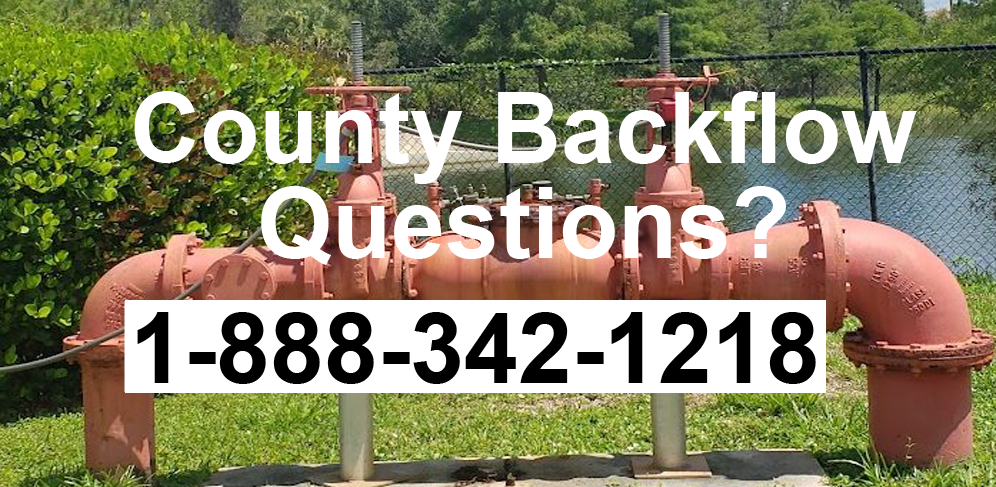Water is a great essential resource, and maintaining its wholesomeness is critical for our own health and basic safety. However, backflow, a situation where contaminated water flows again into the clear water supply, postures a tremendous risk in order to our water to drink. This is where backflow testing comes straight into play. Regular assessment not only ensures that our normal water remains uncontaminated but also protects each of our properties and residential areas from serious health hazards.
In this article, we will check out the fundamental reasons precisely why backflow testing will be necessary, addressing key topics such like the frequency of testing, the warning signs that indicate a need for quick action, and typically the with legal requirements surrounding this particular vital process. By simply understanding the mechanisms of backflow and the particular importance of avoidance, you'll be far better equipped to safeguard your property and the health of those who rely about your water supply. Don't let contamination flow; take the necessary steps to ensure your water remains to be safe.
Understanding Backflow Testing
Backflow testing is a good essential procedure designed to ensure that will moving water remains uncontaminated. It involves assessing the particular functioning of backflow prevention devices, which are installed inside plumbing systems to be able to prevent the inverted flow of contaminated water into the particular clean water supply. By identifying probable weaknesses during these gadgets, backflow testing works a crucial role in maintaining normal water quality and open public health.
The process regarding backflow testing typically includes a series associated with checks to make sure that the prevention devices are usually operating correctly. Licensed professionals conduct these types of tests, measuring the particular pressure levels within the system and examining the devices for almost any wear or malfunction. Understanding what happens within a backflow evaluation helps property proprietors appreciate the importance of this maintenance, mainly because it not only safety measures water to drink but furthermore complies with community regulations.
Failing to carry out backflow testing might lead to serious consequences, including contamination of the water source and potential well being hazards. In a lot of areas, regular backflow testing is not necessarily just a suggestion; it is a legal requirement. Simply by prioritizing backflow tests, property owners can prevent costly repairs and ensure that will their water supply remains safe with regard to all users.

Importance of Regular Testing
Regular backflow testing is imperative for maintaining typically the safety and sincerity of your drinking water supply. After some time, backflow prevention devices might deteriorate as a result of different factors such as pressure changes, sediment build-up, or mechanical have on. By conducting schedule tests, house owners could identify any prospective failures before they will lead to contaminants. Annual Backflow Testing ensures that your own water remains no cost from pollutants plus is safe intended for consumption.
Moreover, many municipalities require backflow testing as part involving their regulations. Failing to adhere to these legal requirements can result in significant fines plus penalties. Regular tests not only safeguards public welfare but likewise helps in sticking with local laws, as a consequence protecting you coming from legal repercussions. Simply by prioritizing these testing, you demonstrate a new commitment to responsible property management and even community safety.
Finally, standard backflow testing might save property users profit the very long run. Addressing minor issues early all the way through consistent testing might prevent costly repairs that may come up in case a serious backflow incident occurs. By simply investing in program checks, property owners not just protect their very own hydrant but also their finances, ensuring that their techniques operate efficiently and effectively.
Backflow Prevention Methods
Applying effective backflow avoidance strategies is important with regard to safeguarding your property’s water supply. One of many methods is to install backflow reduction devices, which will be designed to let water to flow in one course only. These equipment can be tailored to fit various techniques, including residential, commercial, and industrial settings. Regular maintenance plus testing of these kinds of devices ensure they will are functioning properly and can avoid potentially hazardous pollutants from entering water supply.
Education plays an important role in backflow prevention. Property users ought to be informed about the signs of potential backflow issues, such as unusual scents, discoloration of drinking water, or sudden within water pressure. By simply understanding these indications, property owners could take prompt action and seek backflow testing before critical contamination occurs. Furthermore, it is crucial to stay updated on local rules regarding backflow reduction, as compliance is definitely often required legally in many locations.
Lastly, working with certified backflow testers is the vital portion of a comprehensive prevention approach. Professionals can offer expert assessments and even identify vulnerabilities found in your water system. Establishing a regimen schedule for backflow testing, typically upon an annual foundation, ensures that any issues are detected early, reducing typically the likelihood of pricey repairs and protecting public health. By prioritizing these tactics, property owners can substantially mitigate the risks associated with backflow contamination.
